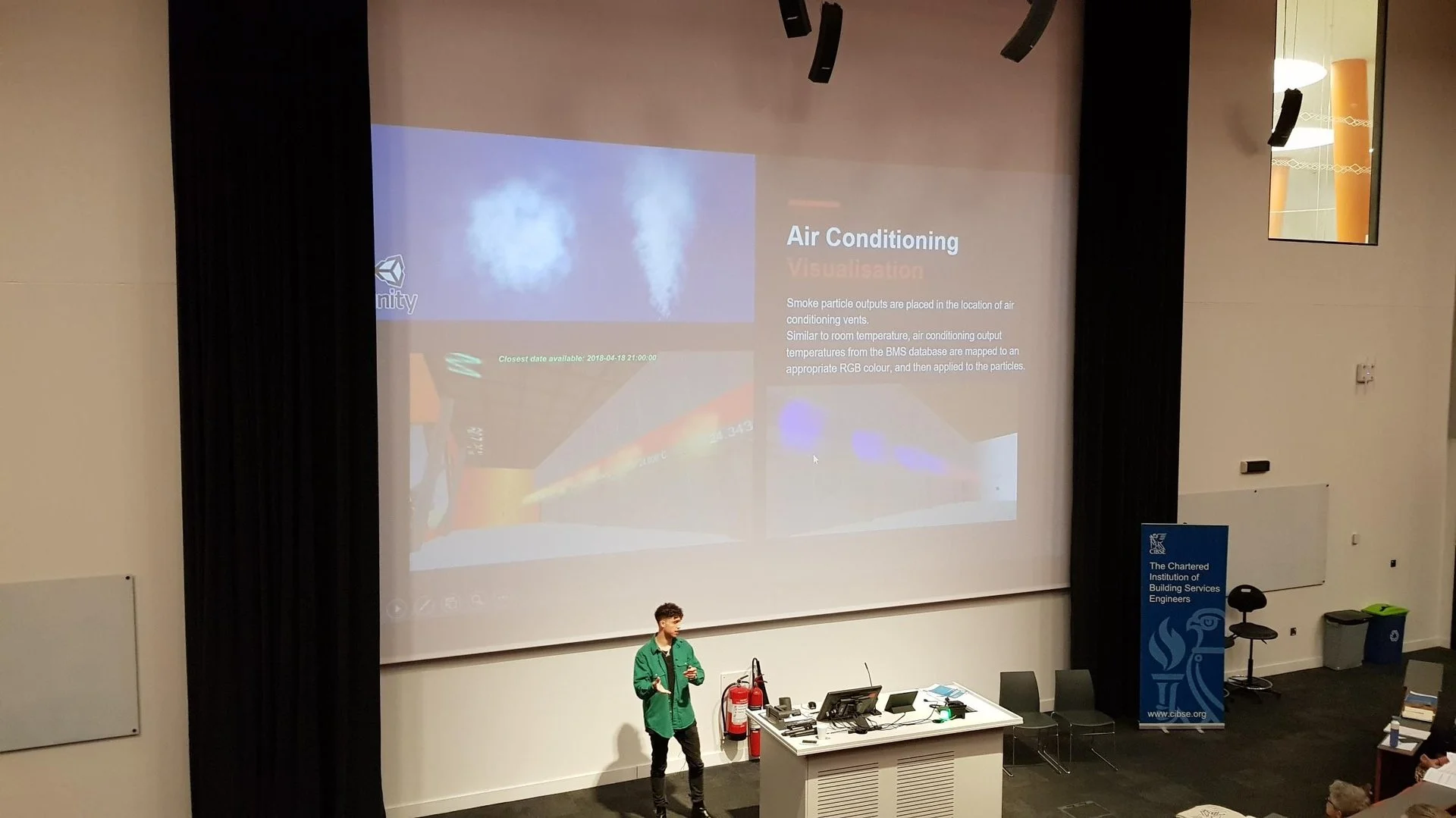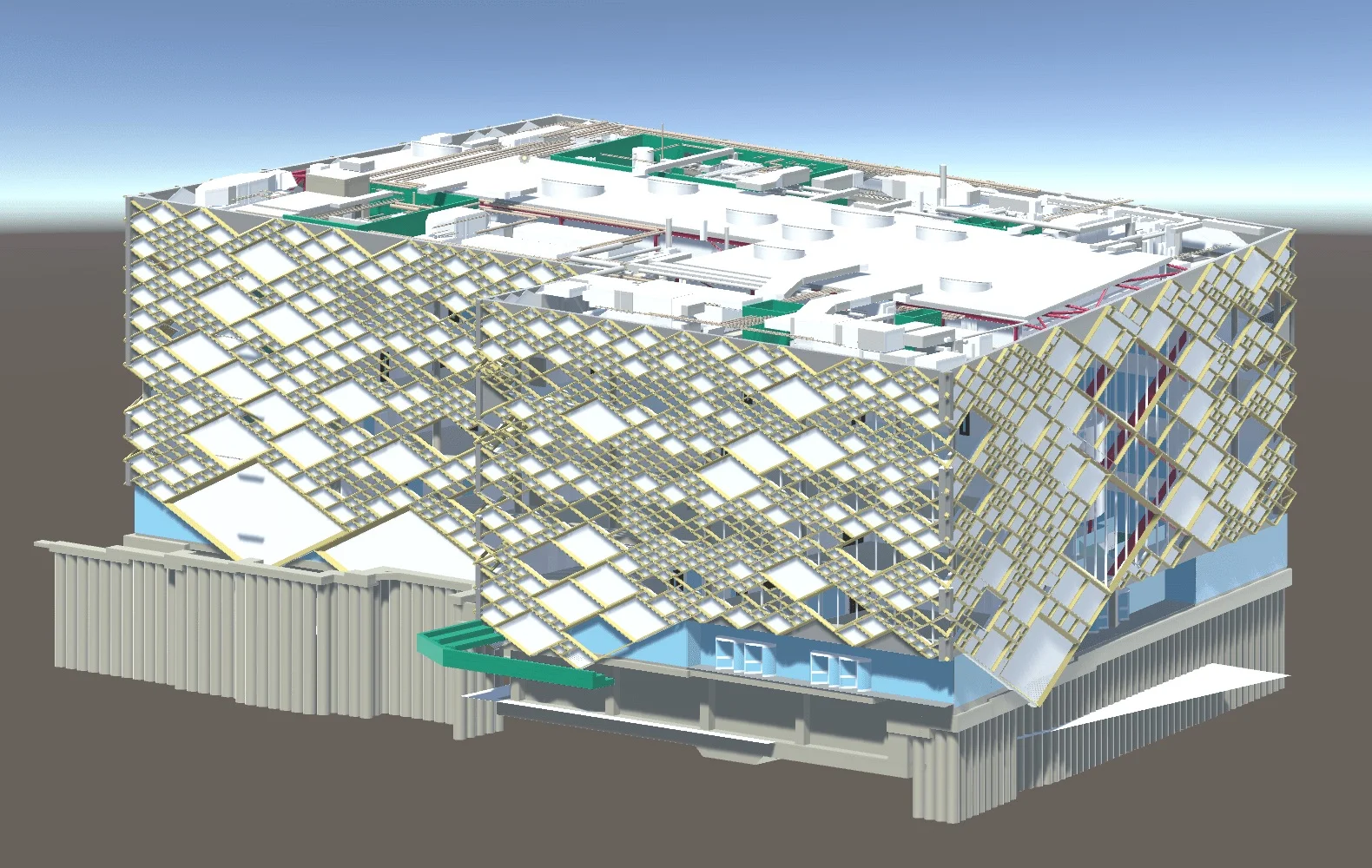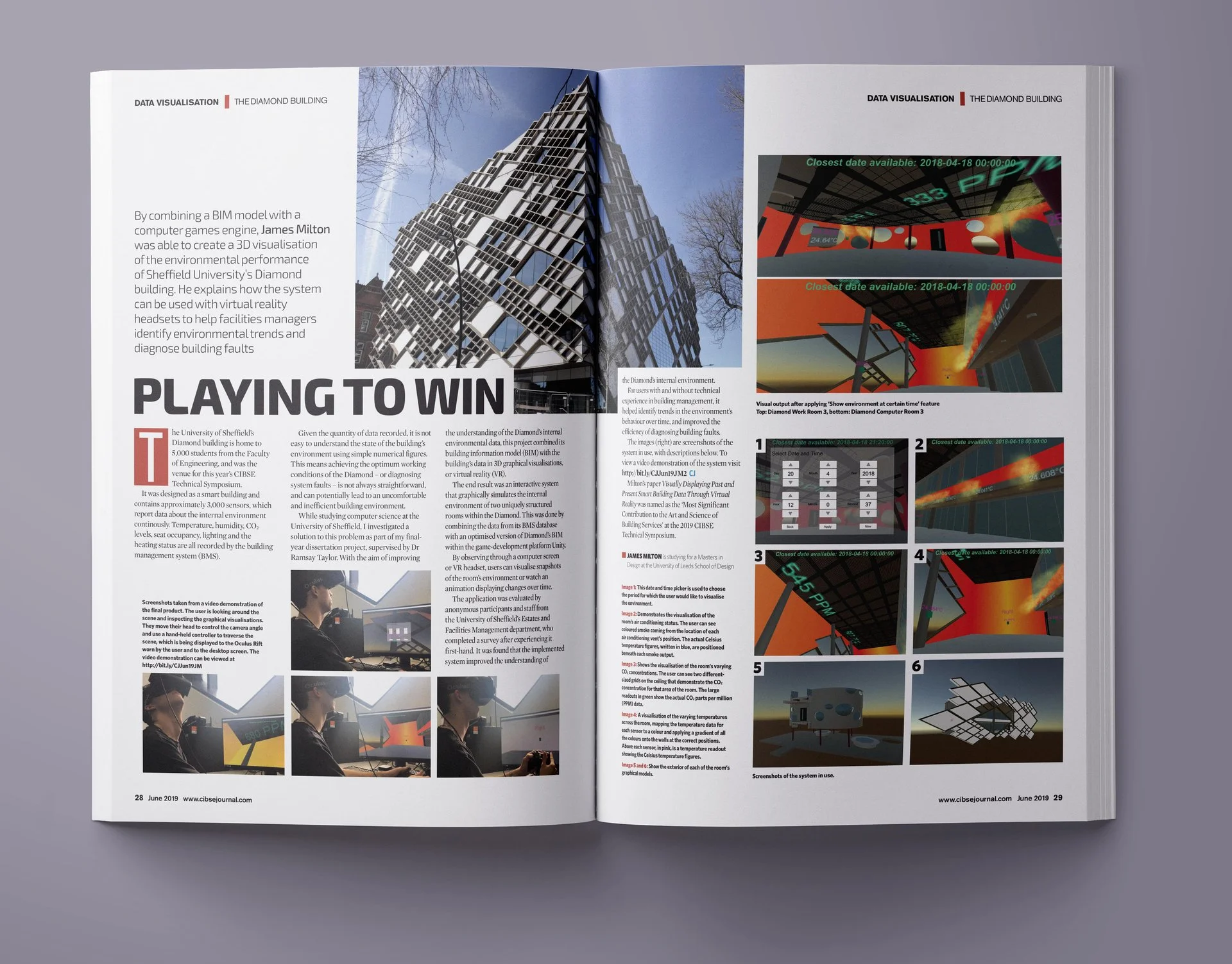What if you could walk through a building and see its data? This VR system transforms 3,000+ sensors from Sheffield’s Diamond building into an immersive, navigable experience built in Unity.
Smart Building Digital Twin in VR
Navigate through real building data — temperature, humidity, CO₂ levels — visualized in virtual reality.
The Concept
Traditional building management relies on dashboards and spreadsheets. This project uses the building’s CAD model to create a VR environment where you can literally walk through data — seeing hot spots, air quality issues, and energy patterns in 3D space.
Technical approach: Unity game engine + architectural BIM data + real-time sensor feeds = immersive building analytics.
Recognition
CIBSE Technical Symposium 2019 - Awarded “Most Significant Contribution to Building Services” at the University of Sheffield for this VR building analytics research.
Published Research: Full paper • Short paper
ARUP Collaboration
Extended the platform with ARUP Design to include external data — weather, wind conditions, and broader environmental factors — creating a more comprehensive building performance system.



